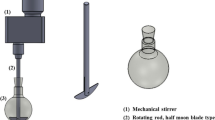Abstract
Aerogels are low density materials which are produced from wet gels, and find a variety of potential uses. The relative importance of shape/geometry and self-association of the starting materials for the production of aerogels is studied herein. Aerogels were produced from microcrystalline cellulose (MCC) and its functionalized analog, carboxymethyl cellulose (CMC). With increasing functionalization, CMC gains the potential for self-association, differentiating itself from MCC. The present study explores the preparation of aerogels from MCC and CMC, comparing performance with and without significant self-association potential, and more broadly evaluating the production of low density structural materials from renewable cellulose. It was observed that the self-association present in CMC substantially increases aerogel mechanical properties when compared those of non-interactive MCC. Aspect ratio is proposed to also be an import parameter in the structure–property relationship for these materials.







Similar content being viewed by others
References
Hrubesh LW, Poco JF (1995) Thin aerogel films for optical, thermal, acoustic and electronic applications. J Non-Cryst Solid 188:46–53
Kistler SS (1931) Coherent expanded aerogels and jellies. Nature 127:741
Schubert U, Husing N (1998) Aerogels–airy materials: chemistry, structure, and properties. Angrew Chem Int Ed 37:22–45
Gutiérrez MC, Ferrer ML, Monte F (2008) Ice-templated materials: sophisticated structures exhibiting enhanced functionalities obtained after unidirectional freezing and ice-segregation-induced self-assembly. Chem Mater 20(3):634–648
Hrubesh LW (1998) Aerogel applications. J Non-Cryst Solid 225:335–342
Bandi S, Bell M, Schiraldi DA (2005) Temperature-responsive clay aerogel−polymer composites. Macromolecules 38:9216–9220
Horga R, Renzo FD, Quignard F (2007) Photoluminescent porous alginate hybrid materials containing lanthanide ions. Appl Catal A 325:251–255
Valentin R, Horga R, Bonelli B, Garrone E, Renzo FD, Quignard F (2006) FTIR spectroscopy of NH3 on acidic and ionotropic alginate aerogels. Biomacromolecules 7:877–882
Chang X, Chen D, Jiao X (2008) Chitosan-based aerogels with high adsorption performance. J Phys Chem B 112:7721–7725
Cram DJ, Hammond GS (1964) Organic chemistry, 2nd edn. McGraw-Hill, New York, p 695
Klemm D, Philipp B, Heinze T, Heinze U, Wagenknecht W (1998) Comprehensive cellulose chemistry, volume 1: fundamentals and analytical methods. Wiley-VCH, Germany
Milford H, Gerald B, Vesselin M (2001) US Patent 6 228 213
Schilling SL (1992) Kirk-Othmer encyclopedia of chemical technology, vol 5, 4th edn. Wiley, New York, p 482
Plunguin M (1943) Cellulose chemistry. Chemical Publishing Co., Inc, Brooklyn
Shlieout G, Arnold K, Muller G (2002) Powder and mechanical properties of microcrystalline cellulose with different degrees of polymerization. AAPS PharmSciTech 3(2):1–10 (article 11)
Hasani M, Westman G (2007) New coupling reagents for homogeneous esterification of cellulose. Cellulose 14:347–356
Kulpinski P (2007) Cellulose fibers modified by hydrophobic-type polymer. J Appl Polym Sci 104:398–409
Ali A, El-Rehim H, Kamal H, Hegazy D (2008) Synthesis of carboxymethyl cellulose based drug carrier hydrogel using ionizing radiation for possible use as site specific delivery system. J Macromol Sci A 45:628–634
Xiao FL, Yun LG, Dong ZY, Zhi L, Kang DY (2001) Antibacterial action of chitosan and carboxymethylated chitosan. J Appl Polym Sci 79:1324–1335
Khan F, Pilpel N (1987) An investigation of moisture sorption in microcrystalline cellulose using sorption isotherms and dielectric response. Powder Technol 50:239
Bandi S, Schiraldi DA (2006) Glass transition behavior of clay aerogel/poly(vinyl alcohol) composites. Macromolecules 39:6537–6545
Capitani D, Porro F, Segre AL (2002) High field NMR analysis of the degree of substitution in carboxymethyl cellulose sodium salt. Carbohydr Polym 42:283–286
Somlai LS, Bandi SA, Schiraldi DA, Mathias LJ (2006) Facile processing of clays into organically-modified aerogels. AICHE J 52:1162–1168
Gawryla M, van der Berg O, Weder C, Schiraldi DA (2009) Clay aerogel/cellulose whisker nanocomposites: a nanoscale wattle and daub. J Mater Chem 19:2118
Author information
Authors and Affiliations
Corresponding author
Rights and permissions
About this article
Cite this article
Surapolchai, W., Schiraldi, D.A. The effects of physical and chemical interactions in the formation of cellulose aerogels. Polym. Bull. 65, 951–960 (2010). https://doi.org/10.1007/s00289-010-0306-x
Received:
Revised:
Accepted:
Published:
Issue Date:
DOI: https://doi.org/10.1007/s00289-010-0306-x




